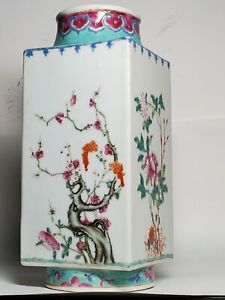Chinese Famille Rose Porcelain
Famille rose porcelain (French for "pink family") is a type of Chinese porcelain first introduced in the 18th century and defined by the presence of pink colour overglaze enamel. It is a Western classification for Qing dynasty porcelain known in Chinese by various terms: fencai, ruancai, yangcai, and falangcai.[1] The colour palette was introduced in China during the reign of Kangxi (1654–1722) by Western Jesuits who worked at the palace but perfected only in the Yongzheng era when the finest pieces were made.
Although Famille rose is named after its pink coloured enamel, the colour may actually range from pale pink to deep ruby. Apart from pink, a range of other soft colour palettes are also used in famille rose. The gradation of colours was produced by mixing coloured enamels with 'glassy white' (玻璃白, boli bai), an opaque white enamel (lead arsenate), and its range of colour was further extended by mixing different colours.[2][3]
Famille rose was popular in the 18th and 19th century, and it continued to be made in the 20th century. A large quantity of Famille rose porcelain were exported to Europe, United States and other countries, and many of these export wares were Jingdezhen porcelain decorated in Canton. Porcelains with famile rose palette were also produced in European factories.
Famille Rose Porcelain For Sale in the USA and Europe
































































































































































































































































